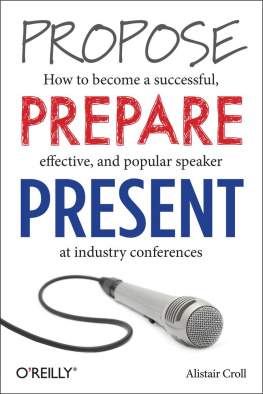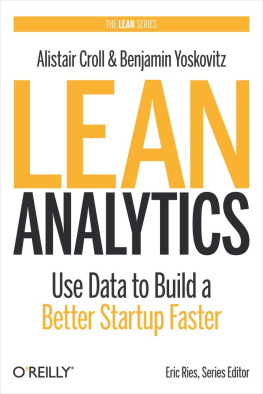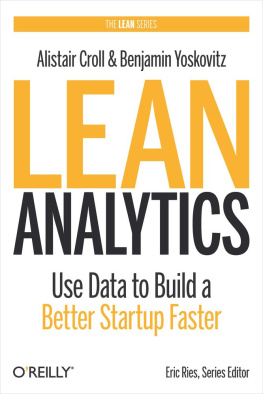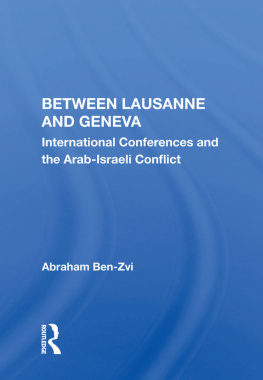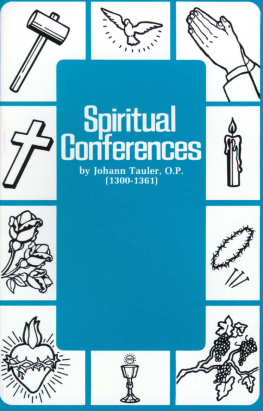Propose, Prepare, Present
Alistair Croll
Beijing Cambridge Farnham Kln Sebastopol Tokyo
Download from Wow! eBook
Special Upgrade Offer
If you purchased this ebook directly from oreilly.com, you have the following benefits:
DRM-free ebooksuse your ebooks across devices without restrictions or limitations
Multiple formatsuse on your laptop, tablet, or phone
Lifetime access, with free updates
Dropbox syncingyour files, anywhere
If you purchased this ebook from another retailer, you can upgrade your ebook to take advantage of all these benefits for just $4.99. to access your ebook upgrade.
Please note that upgrade offers are not available from sample content.
Foreword
I did the math recently, and Ive probably reviewed 10,000 conference submissions in my life. Each event I run gets 300 to 600 submissions a year, and I run at least four events each year. Ive been at this for more than a decade.
On the one hand, thats a lot of terrible proposals to mine for just a few nuggets of content. On the other hand, many of those conferences have gone from nascent topics to prominent parts of the technology landscape, with a corresponding improvement in the quality of topics and calibre of speakers.
Whats not obvious to outsiders is the amount of work that goes on behind the scenes: massaging content, shepherding speakers, wrangling slides, adjusting mics, tweaking websites, fixing registration SNAFUs, scouting venues, and marketing the events.
Running a conference is only slightly more complicated than planning a land invasion, and the people who make it run smoothly are the unsung heroes of the conference world. Youll make their jobs far easier if you suggest awesome content, follow through on your commitments, and invest time in surprising and delighting your audience. Hopefully this book will show you how to do that.
TL;DR: 22 Things to Remember
This book goes into a lot of detail. You may not have time to read it all, and you may not care how conferences are run or what their processes involve. Youre more likely to be chosen if you read all of the material contained within this book, but if youre really in a rush, the part you must absolutely read is . It lists eleven things you should include, and eleven things you should avoid, to maximize your chances of acceptance.
Eleven Things to Include
An inside recommendation from someone the organizers trust
Sample videos and reviews showing how awesome youve been in the past
A speaker whos a minority, all else being equal
A clear explanation of who should attend and what theyll get out of it
Alignment with the narrative the organizer is trying to create
Indications that youll be entertaining as well as informative
An understanding of big trends without a platitude-laden presentation
Personal stories from end users that humanize the content
A willingness to adjust your format and topic to create something awesome
Making it about something else tangentially related to the theme
Opening the kimono and disclosing some secrets
Eleven Things to Avoid
Vendor salesmanship and proposals that suggest youll pitch
Incomplete submissions or forms riddled with errors
Not including a speakers coordinates; using PR as an obstacle
Jargon that wont be easy for readers to grasp
Sounding like SkyMall, with outsized claims of uniqueness
Trying to change content or speakers at the last minute
Expecting to be paid or have travel paid for
Proposing a subject too narrow to capture an audiences attention
Bad spelling, formatting, and punctuation in your submission
Submitting a book rather than a simple outline
A bad past experience
Preface
Introduction
Every year, thousands of conferences happen around the world. Tens of thousands of companiesfrom industry giants to aspiring upstartsjockey for their moment in the limelight, submitting presentation ideas and chasing organizers. They pump millions of dollars into these conferences, hoping to find new customers, strengthen their brand in the marketplace, and meet new partners.
Despite modern advances in technology, theres no substitute for the genuine contact of a face-to-face interaction or the serendipity of lobby networking. Conferences and events are big business, and done right, participation in an event can vault a company to the forefront of its market.
Yet for hundreds of companies, things dont go that way. Submitted topics arent chosen, and when they are, they come across as tone-deaf sales pitches that alienate the audience and undermine all of the hard work done by organizers and presenters.
Im hoping to change this. With the help of some of the smartest conference organizers from a dozen different events, Im going to lay out what it takes to be chosen and how to make your presentation memorable and effective.
Apologies in Advance
This document may be a bitter pill to swallow, particularly for traditional marketers who expect their company to stay on message and who want to control a one-way monologue with their target market. That world is over. In an era of social networks and immediate feedback, a one-way, controlled attitude is outdated and unsustainable. Conversations go where they will, and you need to throw out the monologue in a two-way world.
Ill also cite examples (with names changed to protect the innocent) in an attempt to better explain what works and what doesnt. Apologies in advance if you recognize yourself. Im doing this to try and make things better for organizers, vendors, and presentersand, above all, for audiences.
Ultimately, all of the suggestions and observations in this document come down to one thing: figure out how to be interesting . Thats a difficult task to do well, but if you succeed, your efforts will be hugely rewarded.
Who This Is For
If youve got something to say, if youre a speaker, a PR/marketing person tasked with securing speaking slots, or if youre a speaking consultant specializing in executive speaker placement, then this book is for you. Itll show you why conferences are run the way they are, how to work with organizers, and what to do to make your participation successful.
Chapter 1. The Conference Industry
We cant talk about how to submit, create, and deliver great presentations without understanding how those presentations will be given. There are many different event formats out there, each with its own goals and business models.
Every conference is at a different place in the life cycle of its subject matter: some are exploring nascent subjects in the hopes of defining them, and others are reviewing well-worn material and focusing on practical applications of the topic.
Two Key Dimensions that Define a Conference
There are different kinds of events; its important to distinguish them. Two important dimensions to consider are where the content comes from and how the event is paid for , as shown in . These concepts drive how speakers are selected and what the topics will be.

